Starfleet Command Volume II: Empires At War
Like its predecessor, Starfleet Command Volume II will feature 3D real-time combat based on the elaborate Starfleet Battles board game. Read on to learn all about the new races and various improvements in Volume II.
Starfleet Command challenged many preconceptions about Star Trek combat games: Unlike many Star Trek-licensed games, Starfleet Command actually satisfied fans of the television series. Older games like Starfleet Academy were criticized because they portrayed Star Trek spacecraft more as fast-moving fighter craft than as the lumbering behemoths in the television shows. So in an effort to more realistically model a Star Trek ship's complex systems, Interplay grafted the detailed mechanics of the board game, Starfleet Battles, onto a real-time 3D engine. The resulting game garnered a widely positive response from reviewers, and it was a strong enough commercial success that Interplay is planning to release a sequel in time for Christmas 2000.
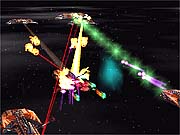
Since the release of the original Starfleet Command, the developers at Interplay's internal 14 Degrees East strategy-games division have founded an independent studio named Taldren, and - having signed a multi-title publishing deal with Interplay - have moved across town to settle in Costa Mesa, California. Starfleet Command Volume II is Taldren's natural first effort, but it's hardly the only game based on the original Star Trek series set to come from Interplay this year - in addition to the recently released space combat sim Klingon Academy, Interplay is working on Star Trek: New Worlds, a 3D real-time strategy game.
Starfleet Command Volume II improves on several key elements of the original game, including the single-player campaign, the tactical fleet control, and the graphics. Much of the criticism leveled against the original game focused on the dynamic single-player campaign; critics generally referred to the limited variety of missions and the lack of long-term strategic considerations. While the Starfleet Command campaign was primarily intended to increase replay value by dynamically altering a number of scripted combat missions, Volume II's campaign will introduce a more transparent view of each empire's rise and fall. You'll now be able to capture star systems and see a direct effect on your empire. Politics will also play a new role. To reflect these changes, the campaign mode has had its name changed from "dynaverse" to "metaverse." To complement Starfleet Command's popularity as a tactical multiplayer game, the developers have decided to also make the metaverse mode available for online play. For more details on the metaverse mode, be sure to check out our accompanying interview with Taldren's senior designer, Joshua Morris, later on in this preview.
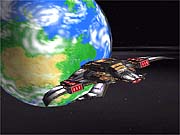
Volume II brings new ships to all six of the original races, including the Federation, Klingons, Romulans, Hydrans, Lyrans, and Gorn. The new ships include swift fighters, patrol craft, and escort vessels that will protect larger ships and help balance the threat of missiles. Taldren has also added two new races to the game, the Mirak Star League and the Interstellar Concordium (ISC). Read on to find out what role they'll play in the game's campaign.
The two new races play a central role in Volume II's story. The Mirak are a wild and savage race who rely on swarms of missiles to overwhelm their opponents. The Mirak empire is situated between the Federation, Klingon, and Lyran empires. The Mirak foster a deep hatred for the Lyrans and admire the Klingons, though they perceive Klingon behavior as brutish. The Mirak have a shaky relationship with the Federation because they think the Federation is soft and weak.
The ISC unites a number of ethnically diverse worlds within its territory, rather like the Federation, but its dominant species is easily distinguished by its smooth green skin and large eyes. The ISC borders the Romulan and Gorn empires, and for many years the ISC sat on the sidelines watching and waiting. Seeing how violent the rest of the galaxy was, the ISC decided to build up its force and create a new weapon called the plasmatic pulsar device, a long-range weapon that can obliterate multiple enemy ships' shields and inflict massive internal damage against their hulls. Ready to face any and all opponents, the ISC embarked on a mission to save the galaxy from itself.
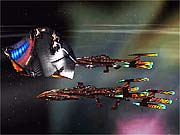
At first glance, the new ISC and Mirak ships seem to fare well against their familiar predecessors, even though they introduce only one new weapon into the balance. The addition of two more playable factions, for a total of eight independent empires, should also inject more variety into the new multiplayer metaverse play.
You'll have more ways to play Starfleet Command Volume II thanks to the new races, but it'll be easier to play because of the improved interface. Because the many control panels in the original Starfleet Command's tactical combat were complex, and they provided detailed control of every combat-relevant ship system, it was relatively difficult to manage the other computer-controlled ships in your fleet. In Volume II, you'll be able to toggle on a new fleet interface at the bottom of your screen, which provides an easy way to monitor the current target and hull integrity of up to three ships, as well as to set specific formation types and aggression levels. You'll be able to set loose, medium, and tight formation settings to control the degree of autonomy of the other vessels. For instance, if you really need to focus firepower on a specific target, ships in tight formation will wait to fire until you, the fleet admiral, give the command. A bar on the right side gives you the choice of six formations.
The fleet interface adds an additional degree of tactical complexity to the game, as it opens the possibility for you to move your entire unit as one or to have ships operate autonomously. Since so much of the tactical game centers on getting the best position to avoid exposing your ships' more vulnerable sections, the formations actually work to protect your weaker quarters and to help concentrate firepower for assaults.
While Volume II improves mostly upon the technical shortcomings of Starfleet Command, the artificial intelligence and the graphics have also been touched up. The starships have been subtly yet noticeably revised with new graphics features like luminosity mapping, colored light sourcing, and damage textures. The first two of these increase the fidelity of the 3D lighting so that nearby weapon fire and celestial bodies may more realistically cast their colorful sheen on ship hulls. The ISC ships in particular also show off a new lighting detail - running lights along the ship hull. Though Volume II won't deform or break ship models until a ship is actually destroyed - so a photon torpedo still can't punch a hole through a Federation cruiser's saucer - the addition of damage textures lets you really see which vessels are taking a beating. Thus, a ship can no longer appear to be fine one second and explode the next. Impressive special effects like venting plasma and electrical arcs lend additional flare to a successful attack.
To get a better sense of the new elements in Starfleet Command Volume II, GameSpot spoke with Joshua Morris, senior designer at Taldren.
GameSpot: What's the new approach you're taking in the campaign mode of Starfleet Command Volume II?
Joshua Morris: Both the single-player and multiplayer game will use our new "metaverse." This system allows more flexibility and context to the missions in a campaign. You'll start as a low-ranked character with a small frigate under your control and will slowly work your way up the ranks and improve the ships in your fleet. You'll be able to move on the large galactic map-choosing missions based on current galactic situations. Missions will range anywhere from convoy escorts to planetary assaults. Your actions will not only affect your personal status, but they will also affect the status of empires, for better or worse.
GS: Why did you decide to change the campaign system's name from dynaverse to metaverse?
JM: Metaverse better reflects what we are trying to achieve. We wanted players to have a context to fight their battles. A "metagame" refers to a game within a game. Therefore, we feel the metaverse describes what we are doing better. We have our superior tactical combat engine, and we are wrapping a strategic wrapper around it. In the metaverse, you will have to think about how each individual mission effects you and the empire you serve.
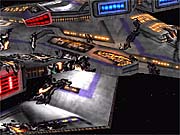
GS: How will the missions be different in the metaverse game? Will the elite organizations still offer the same sort of covert operations?
JM: In the single-player game, there is still a plotline for each race. Most revolve around the ISC war of pacification or the introduction of the Mirak Star League. The unique missions are introduced throughout your campaign, sometimes requiring the player to navigate hostile areas to get to the locationwhere the next part of the storyline takes place. Some missions are covert, while others may be political or combat related. For example, in one mission you may defeat a pirate that gives you information about a prisoner being held on a planet. Your next goal would be to navigate around the galaxy to the point where the prisoner is being held and rescue him. However, along the way you might encounter some enemies that you have to deal with. In this way, we link the main missions in the storyline, but add more missions and complexity. This also makes sure that no two campaigns are the same.
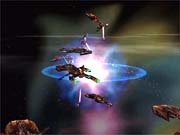
GS: Tell us a little bit about how the two new races will fit into the sequel's new dynamics.
JM: The Mirak Star League is situated between the Federation, Klingon, and Lyran empires. They start with an uneasy alliance with the Federation, a truce with the Klingons, and a large hatred for the Lyrans. It shouldn't take long for a war to happen between the Mirak and the Lyrans.
In some ways, the ISC is the story focus of the game. They are adjacent to the Romulan and Gorn empires. They have had unfortunate encounters with their neighbors and have decided the universe is insane and must be saved from itself. They will launch a massive "War of Pacification" in Starfleet Command Volume II. They are very serious about the peace and will liquidate anyone who opposes the forced peace. Peace is their motive, but the question is, does the end justify the means?
GS: Will the six races in the original game change in any way?
JM: All the races will change. The Federation and Klingons will receive fighters, along with the ISC and Mirak. Fighters will form waves of squadrons that attack enemies before returning to their carriers to reload and repair. The Romulans, Lyrans, and Gorn will get fast patrol craft. These ships pack a large punch for their small size. With the addition of carrier forces, we have added escort ships to help protect the large ships from missile and fighter attack. You will see more ship variations in most of the ship classes for every race in the game.
GS: In Starfleet Command, you'd simply move from one quadrant to another, and then access a menu of choices from there. How is the interface different in Volume II?
JM: We have gone to a hex-based quadrant system to regulate movement in Volume II. We increase the resolution of the map, thus increasing the number of sectors to number in the hundreds or thousands. In Volume II, you will still move from sector to sector, but you will now see planets, bases, and terrain. You will now have to return to a base to make repairs. In addition, players will have options as to what mission to take. However, they should be aware that the enemy can force them into a mission by attacking a sector that they're in.
GS: How does the metaverse work in multiplayer games?
JM: Players will move around the galaxy and choose where to send their ships. When they near a border of a hostile neighbor, they will get mission options. These can range from convoy raids to base assaults to scouting missions. Players will collect prestige for winning battles and be allowed to repair and buy new ships at bases with this income. Players will be able to check the galactic news service to see what is happening in the galaxy or check their rankings in the rankings area. Players will also be able to enlist in squadrons during play. This allows the players to fight as one unit in most fights. The game will also support people who want to join multiplayer fleets and have their information recorded as a group. There are other areas that we are working on that I can share in our next interview.
GS: What other multiplayer option will be included in the game?
JM: The traditional multiplayer game will still be supported for people who want a quick fix. We will be adding a couple of new scenarios to multiplayer including zone assault, which is our version of Team Fortress, and fedicus maximus, which is our space racing game. All in all, I think there will be something new for everyone to enjoy.
GS: What does fedicus maximus mean?
JM: It's like circus maximus (chariot racing), but with a Star Trek theme.
GS: Thanks, Josh.
Stay tuned for more coverage on Starfleet Command Volume II as the game's Christmas release date grows closer.
Got a news tip or want to contact us directly? Email news@gamespot.com
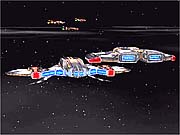
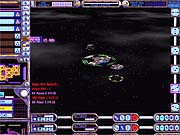
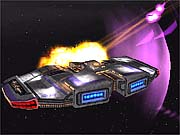
Join the conversation